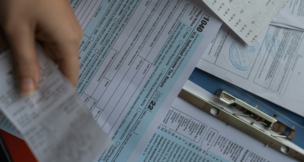Voters sound alarm on rising energy costs
Matthew Kandrach Guest Commentary//November 13, 2024//[read_meter]
Voters sound alarm on rising energy costs
Matthew Kandrach Guest Commentary//November 13, 2024//[read_meter]
American voters soundly rejected Bidenflation at the ballot box. In an ABC exit poll, 67% of Americans said the economy is in “bad shape.” That shouldn’t be too surprising, though, since inflation is wiping out many family budgets. In fact, a half-gallon of milk now sells for as much as $10 in parts of the United States.
But what’s driving all of this budget-busting inflation? And what to do about it?

Much of the problem stems from higher energy costs. CBS News reports that the price of electricity in the U.S. has jumped 28.5% since 2019. In some states, the increase has been much higher. For example, California – the most populous state in the nation – has already seen electricity rates at its three major utility companies rise by as much as 110% over the past decade.
Such a hefty jump in electricity costs has translated into plenty of real-world pain across the nation. The U.S. Energy Information Administration says that electricity-driven inflation has already resulted in more than one-third of U.S. families being unable to afford basic energy needs.
The trajectory we’re currently on only promises more pain. Electricity demand is suddenly soaring. Artificial intelligence, electric vehicles, and the exponential growth of data centers are putting massive, new demands on America’s power grid – with new data centers alone requiring as much power as a small city.
Soaring power demand wouldn’t be a problem if it was matched with new supply. But the Biden administration has made it all but impossible for the power sector to keep up. Even as demand soars, the Biden regulatory agenda is forcing essential power plants offline when they’re needed most.
Yes, you read that right. At precisely the time when we need more electricity, the U.S. Environmental Protection Agency (EPA) has been pushing a set of rules to eliminate the nation’s coal fleet and make it all but impossible to build new baseload coal and natural gas plants. Until the election, new rules targeting the existing natural gas fleet appeared to be on the horizon as well.
One utility and grid operator after another has implored the Biden administration to change course, warning that this power plant strategy is simply unworkable. The nation’s largest grid operator, PJM Interconnection serving 65 million Americans, has warned it’s going to be alarmingly short of power by 2030.
Americans don’t want mandated scarcity and soaring prices. Common sense dictates that we keep existing natural gas and coal plants online until new, reliable capacity is built to replace them. And that means the next administration has a golden opportunity to provide relief for U.S. consumers.
The incoming Trump administration should immediately reverse the EPA’s current, unworkable agenda. Simply keeping up with soaring power demand will take every power plant we have.
Consumers want – and deserve – affordable, reliable power. Energy policy that underpins it, instead of undermining it, shouldn’t be too much to ask. A decisive course correction to American energy abundance can’t come soon enough.
Matthew Kandrach is president of Consumer Action for a Strong Economy, a free-market advocacy organization.


















